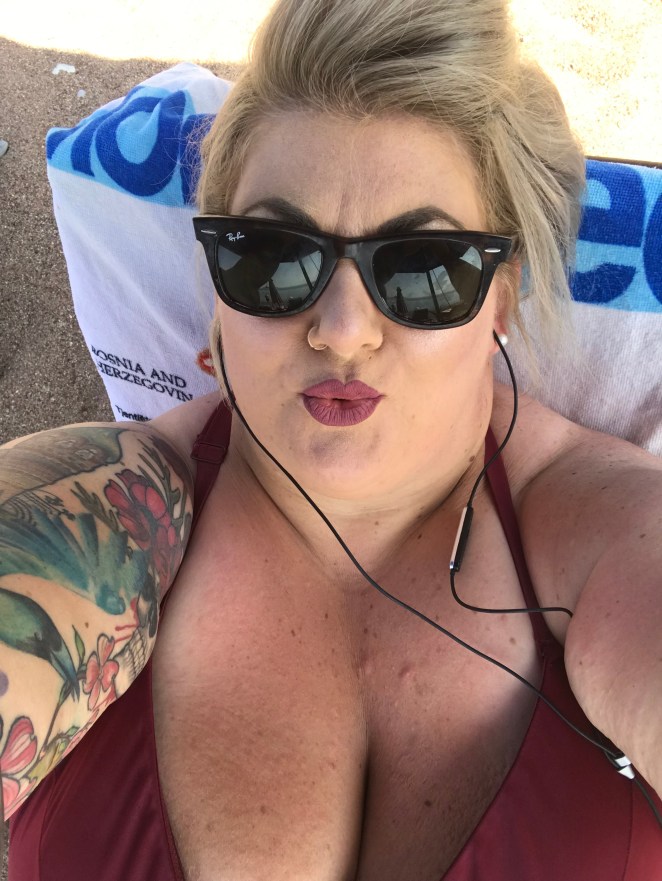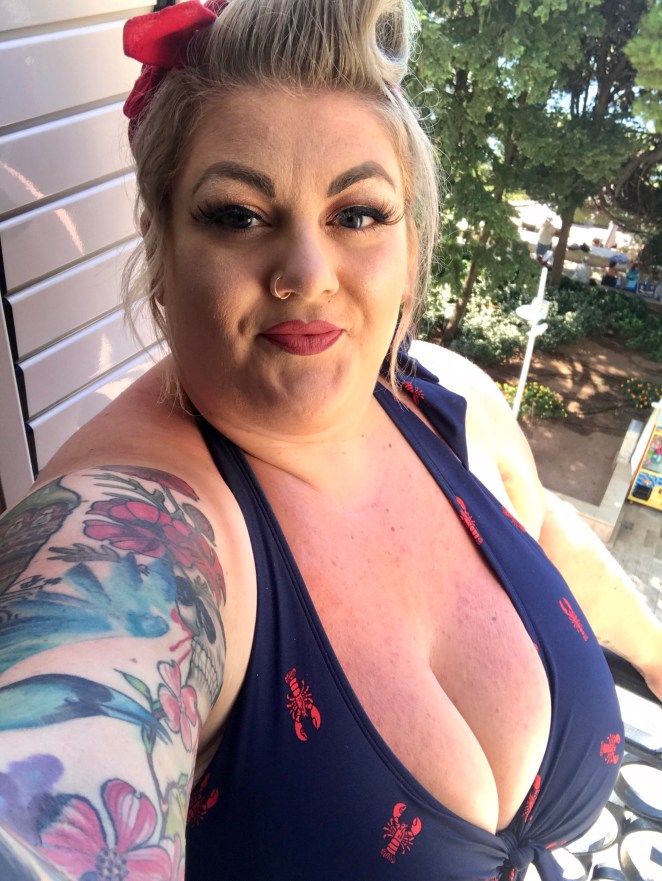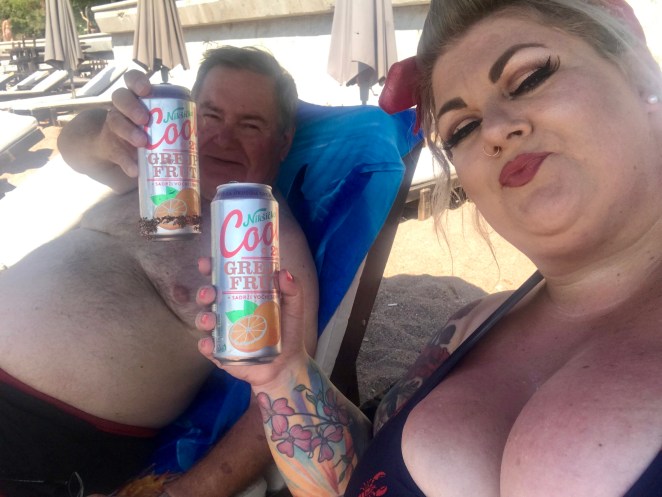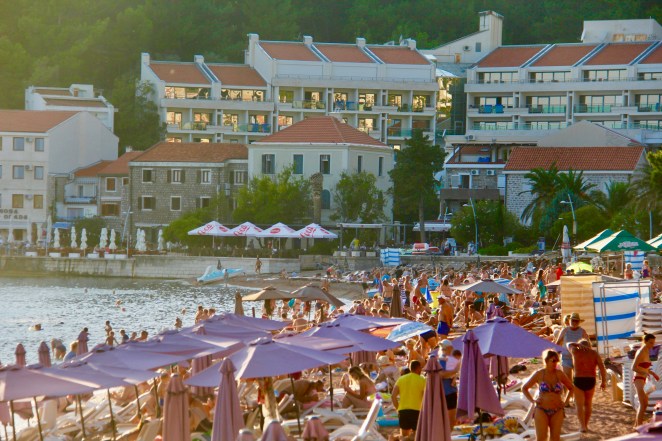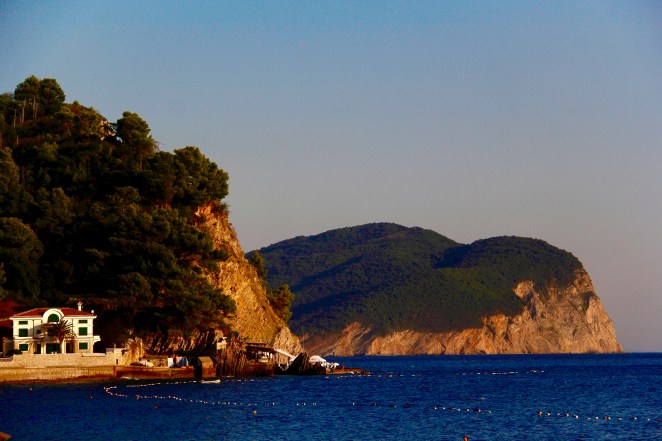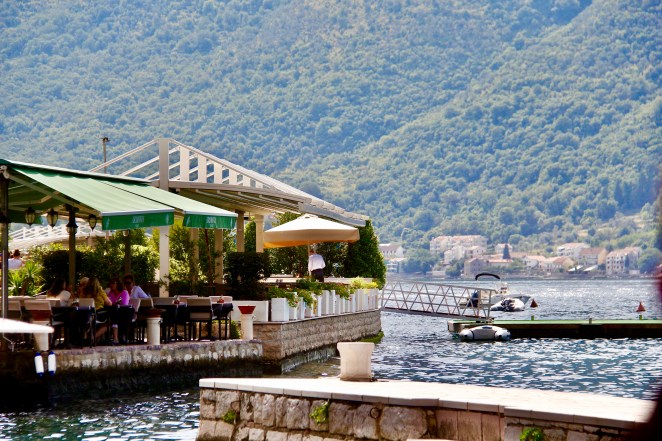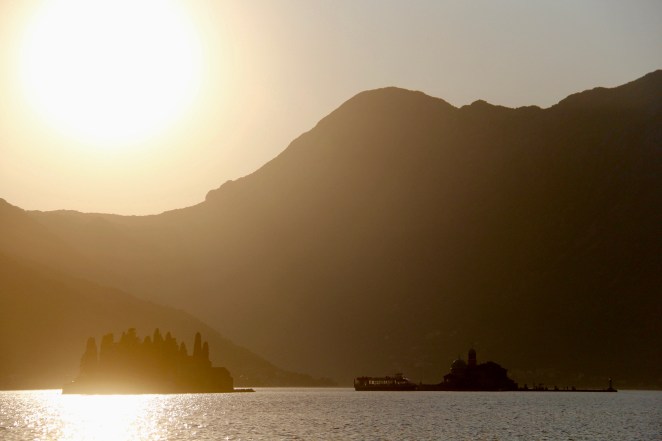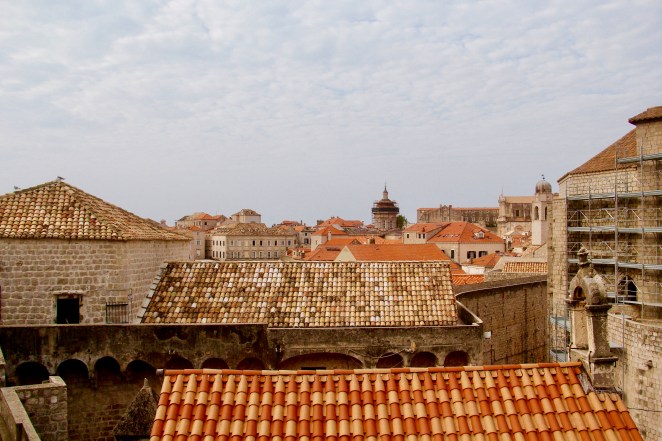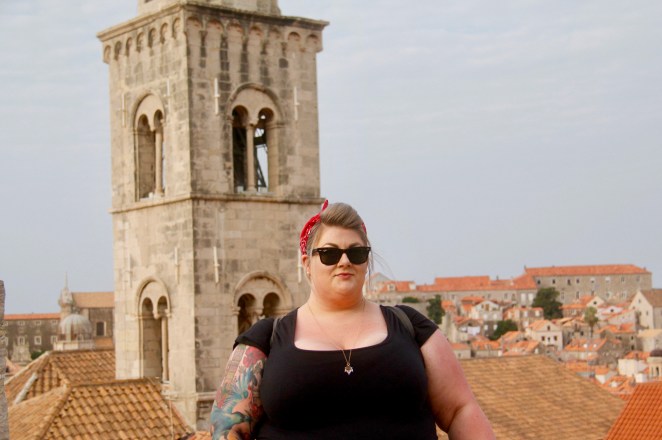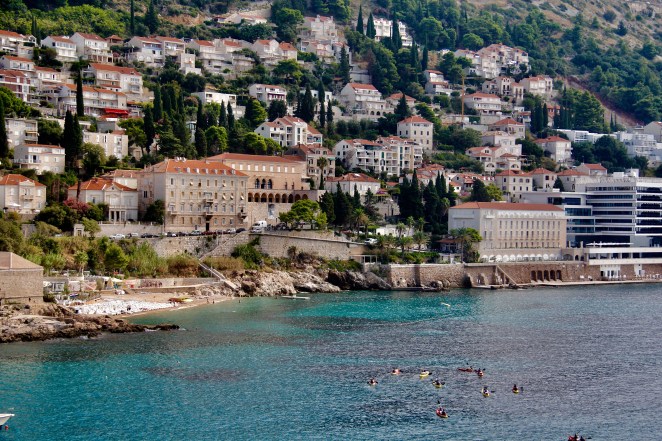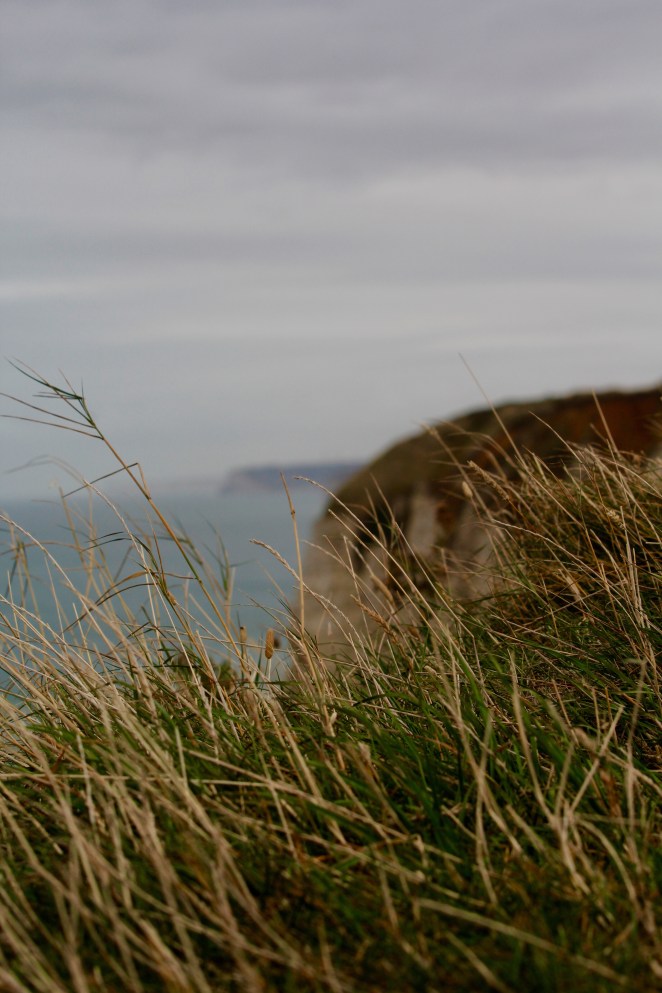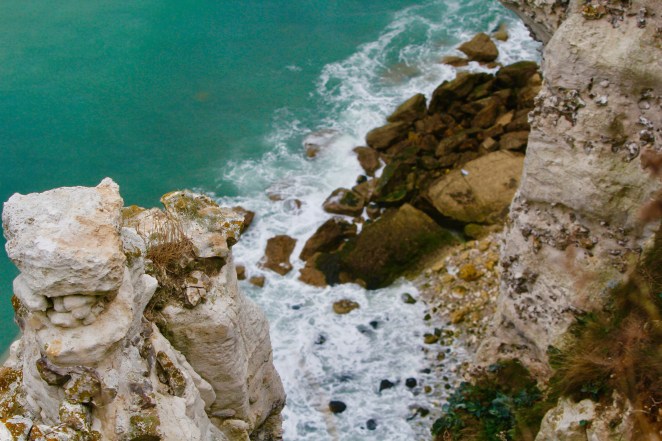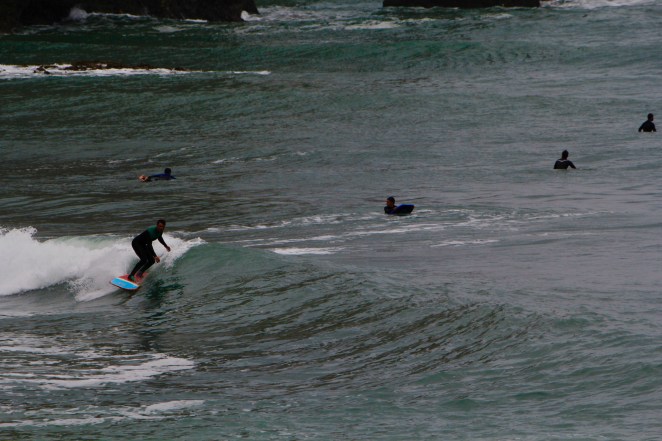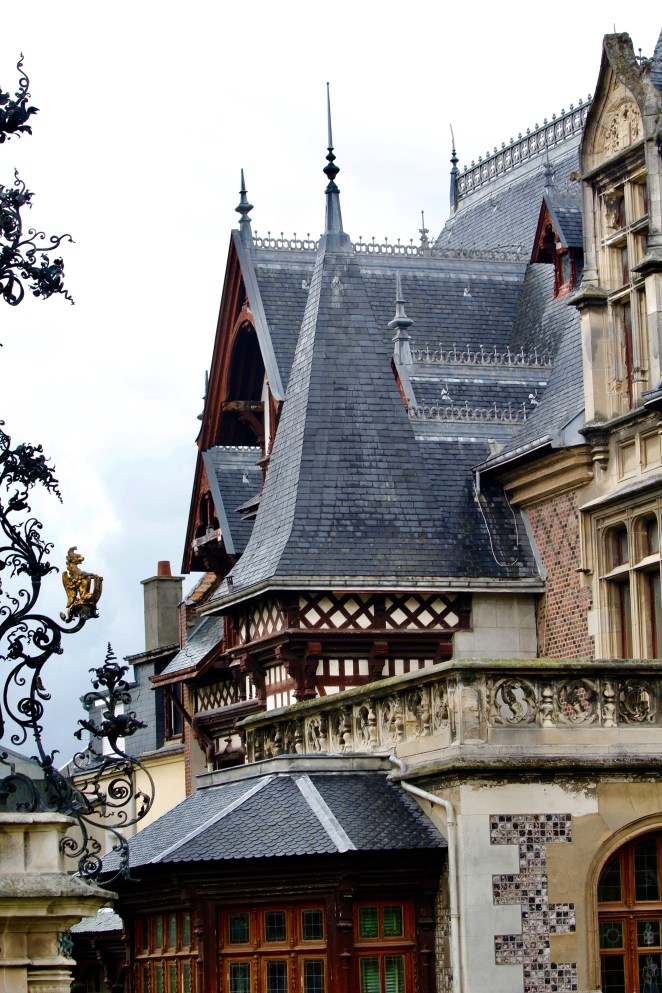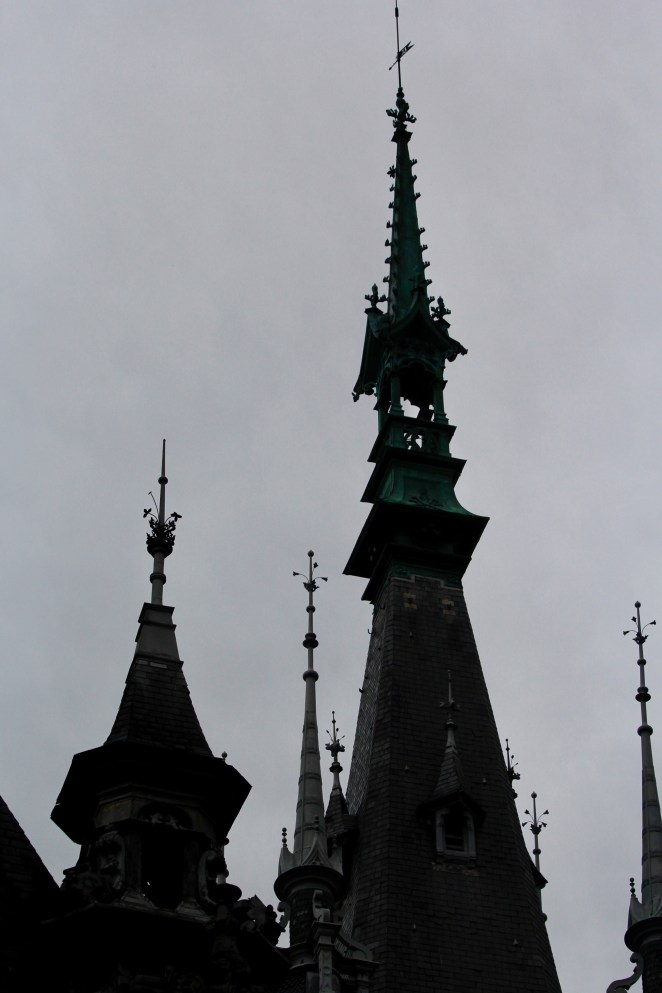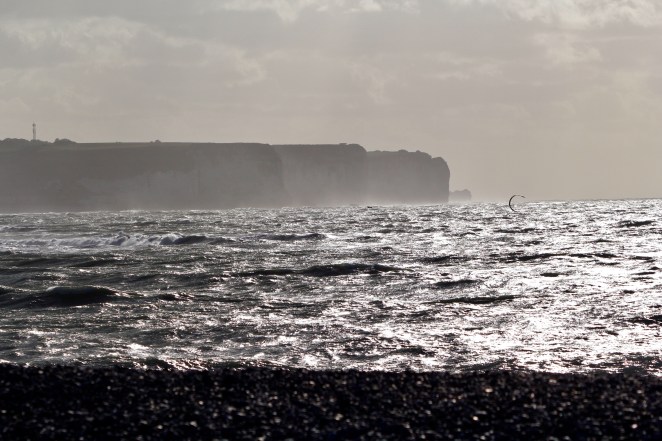Today we got up pretty early, as it was going to be a busy and emotional day. We were starting out the day by visiting Juno Beach.
For those of you unawares, there were 5 beaches stormed on June 6th, 1944 marking the start of the Battle of Normandy in WWII – the American forces stormed Omaha and Utah, the British stormed Gold and Sword, and Canada stormed Juno. Canada recently built an interpretive centre at Juno Beach, with Canadian employees running the exhibits.
It was a 1 hour and 45 minute drive west for us, and Ma and I peppered Pa, our resident historian with questions about the war and Canada’s role.
Juno Beach fronts a beautiful fishing town, Benières-Sur-Mer. We got into town and to the Centre and wandered the grounds.



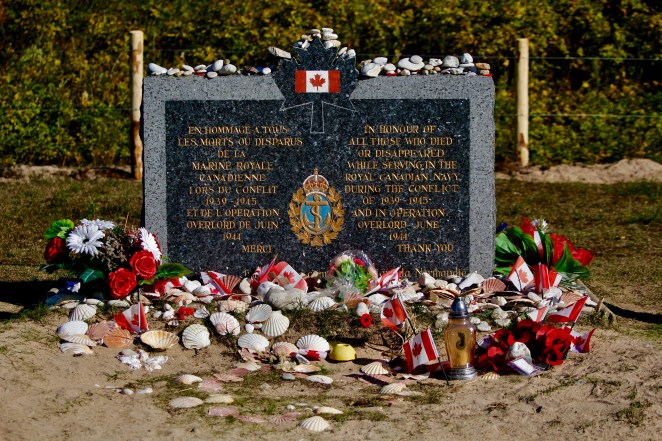
After wandering, we decided to head down to the beach itself.
I was honestly very apprehensive about how to feel. I knew that Juno is a very sacred place to Canadians and a very emotional spot, and my brain recognizes that, but I was afraid I wouldn’t feel anything, standing in the spot where 359 brave Canadian souls fought and died on that day in 1944.
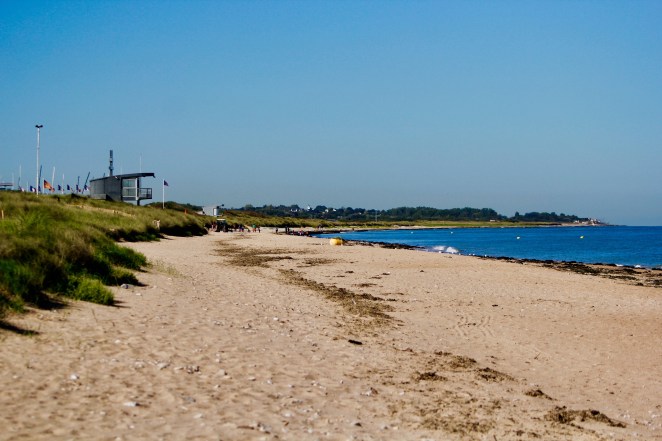


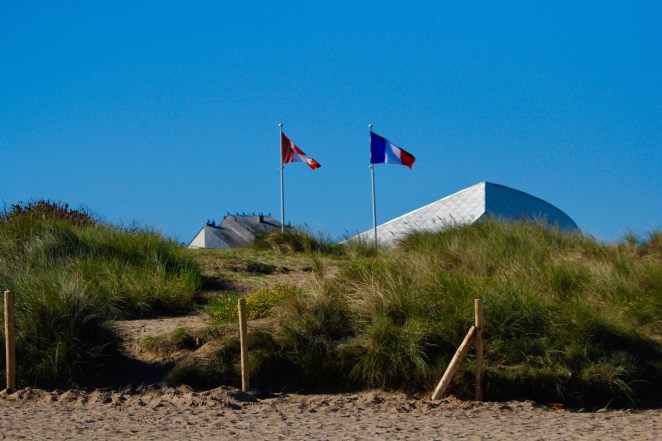


The beach itself is beautiful – sandy and warm with blue water and shells dotting the tide lines – but it was eerily quiet. There were some fisherman down the way casting their lines, but other than that it was me, Ma and Pa. All you could hear is the lapping of the waves on the shore. It was as if every living and kinetic being knew what had happened there and was paying their respects – the birds, the ocean, the grass. It was tangible.
We walked along the beach silently And watched the high tide, and went into the Juno Beach Centre and looked at the exhibits – posters, literature, radio broadcasts, donated relics, uniforms and medals from the period. The walls filled with facts and stories, and boards with the stories of Victoria Cross recipients all along the way. The exhibit ends with a video of footage of D-Day and voice over of Canadian letters written home. The ending, showing soldiers disappearing from photos and ending with the words “They walk with you/dans leur pas” is when my emotions got the better of me and I just let the tears stream freely down my face. I would like to think that I feel emotional about it because I work so closely with people who have served in the Canadian Forces and I care about them, but I think it’s more because I cannot process the heroism of very young men who volunteered in a time of need and were lost, and their families and friends who had to continue on without them. Maybe it’s both.

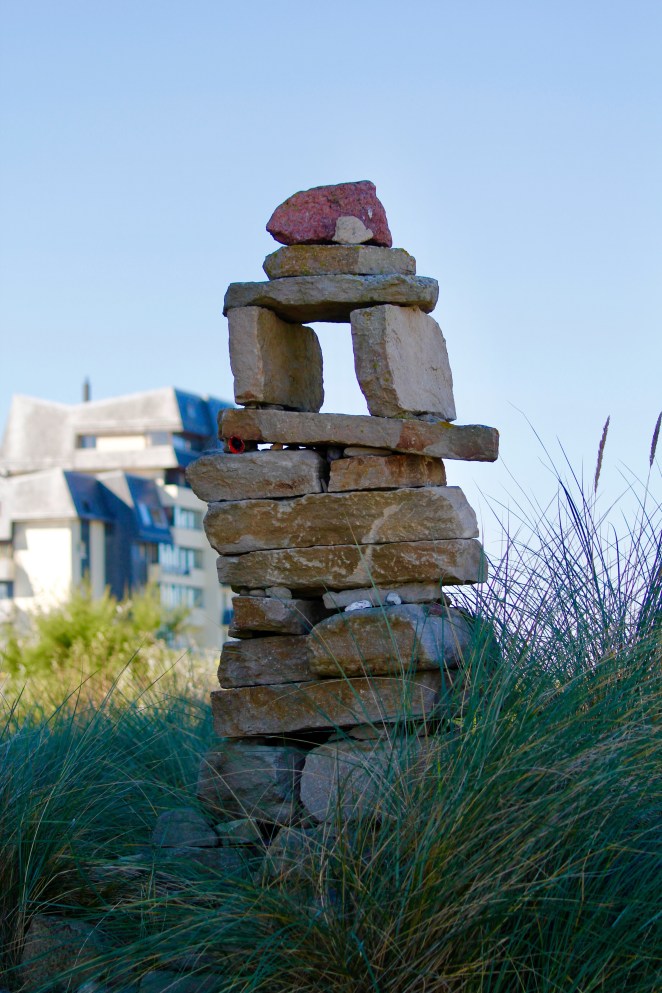

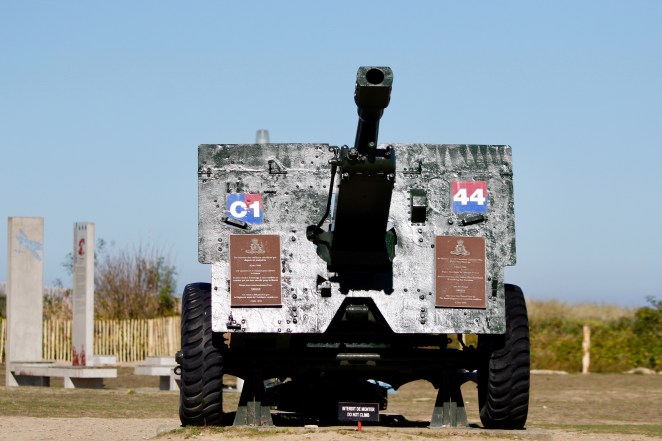
After we finished up at Juno Beach, we headed 10 minutes down the road to the outskirts of a town called Bény-Sur-Mer. Here is where the French government donated a square of land to Canada and is the final resting place for 2,048 Canadians who we lost at the beginning of the Battle of Normandy.
As we were pulling in, another car was leaving so we were alone with the white grave markers and maple trees. We signed the visitors book and silently walked the graves.

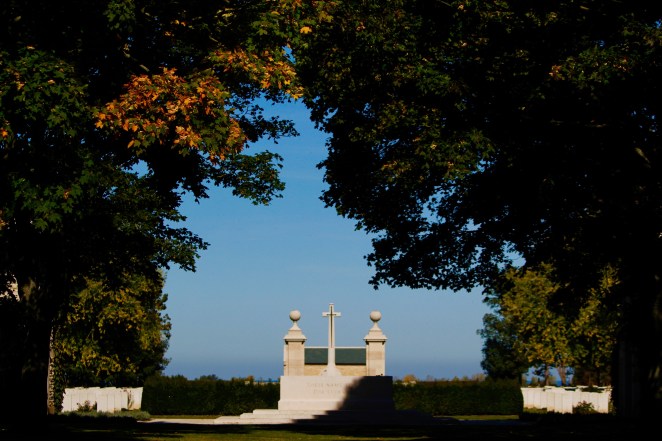



Each white marker features a maple leaf, a name and a date. They also featured either crosses, a Star of David or nothing, and many had words from their families inscribed at the bottom. The rows of markers are dotted with flowering plants.
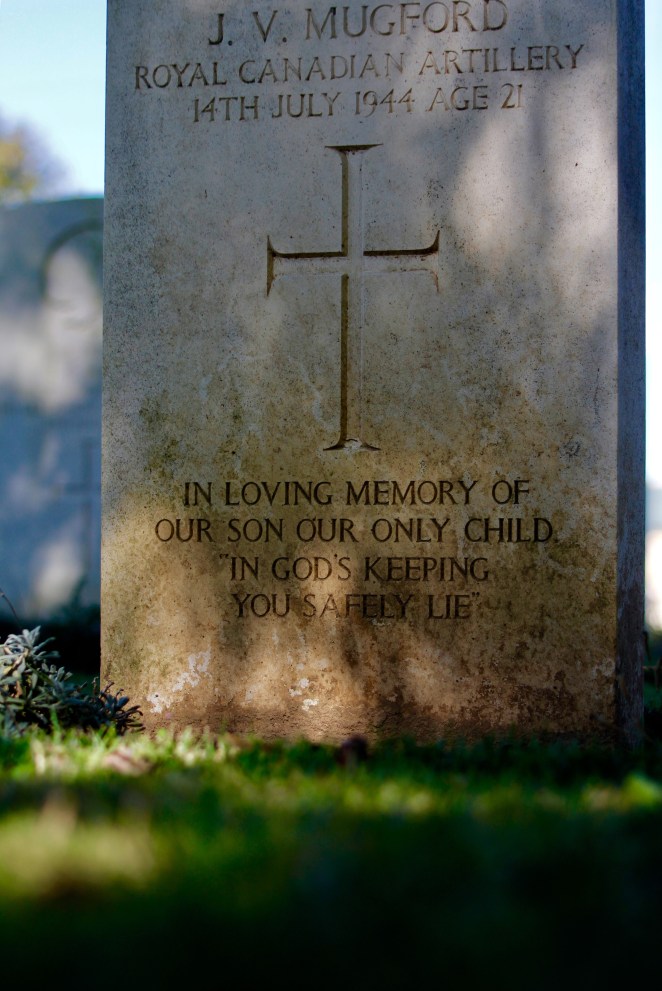
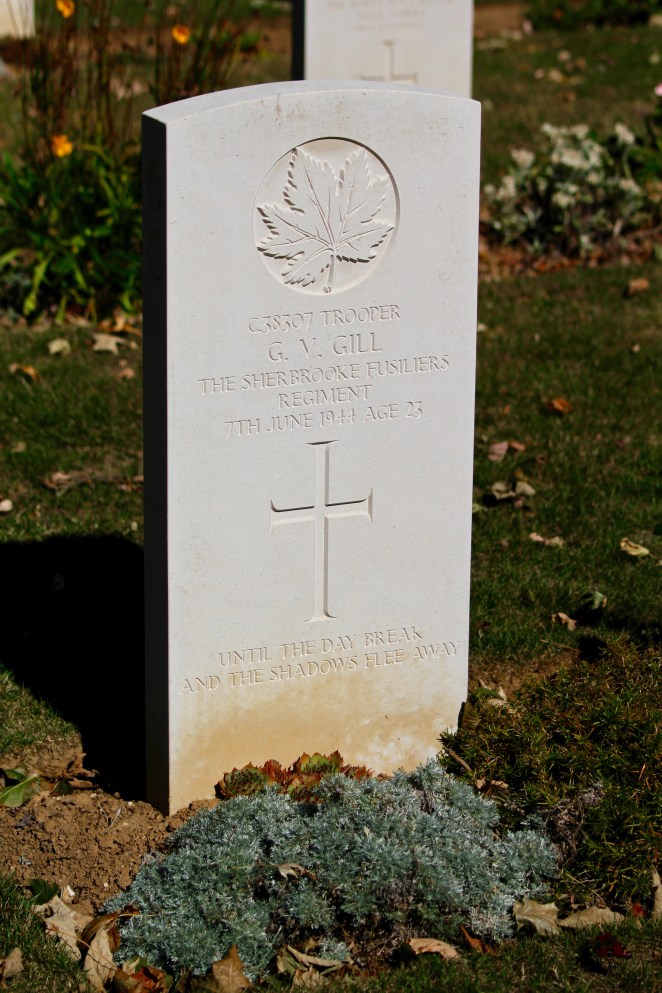



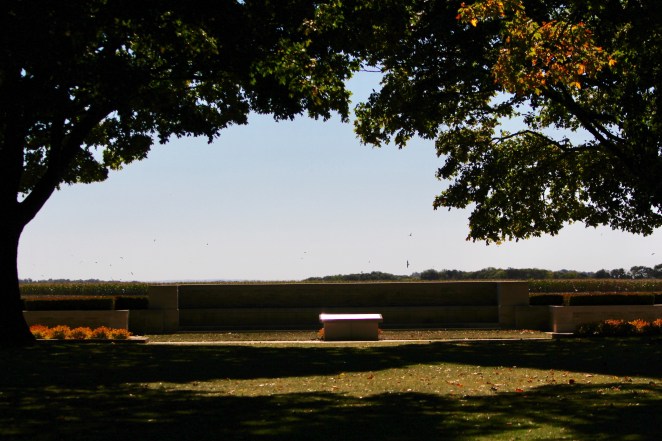
What really struck me about the cemetery is that it’s not your typical spooky, sinister and grim graveyard, although it is still haunting. The cemetery was teeming with life – trees, flowers, buzzing bees, butterflies and chirping birds. There was serene life to the grounds, as if imploring us to celebrate the peace that the cemetery’s residents fought and died for us to have. For any proud Canadian, it is a must-visit.
Our next destination was a gorgeous seaside escape called Arromanches-les-Bains. We were headed there to see the mulberry harbour and caissons still visible in the ocean. This is where the British constructed an enormous portable and floating harbour in order to send fuel and supplies to the troops fighting in the Battle of Normandy.

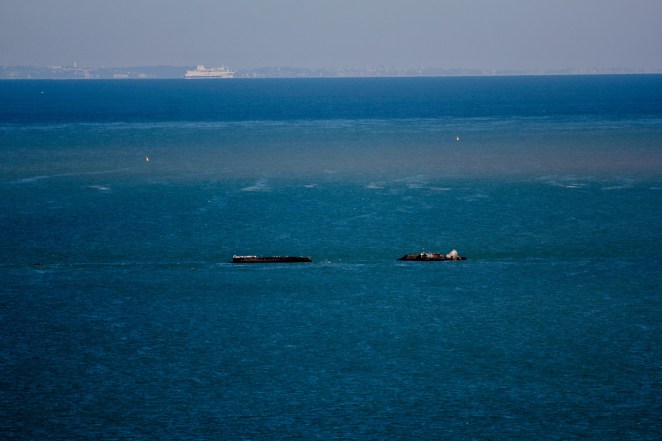


Driving towards Arromanches-les-Bains we noticed French, British, American and Canadian flags flying in the distance, so we drove towards them to see what was there. Turns out a large panoramic viewing platform had been built and part of the harbour was on display.
We soon realized it was way past lunchtime, so we headed into the town for some food. In the town proper there are several large firearms, including a German 88, which Pa totally nerded out on.
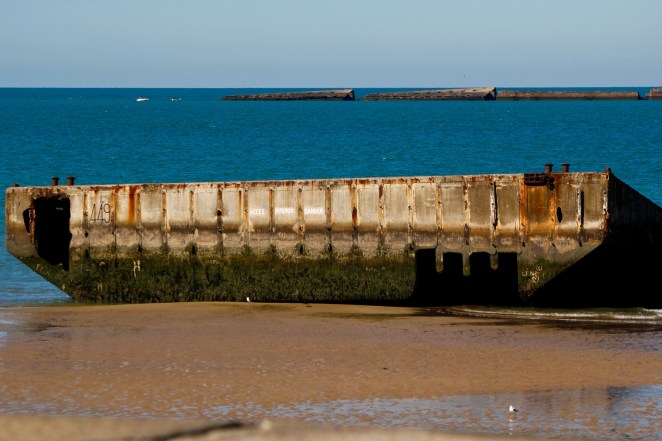


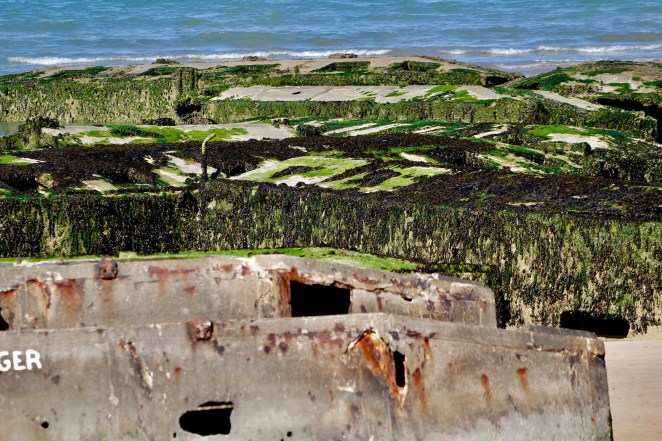

Our next stop and the westernmost part of the day was outside a town called Longues-sur-Mer. Longues-sur-Mer is about 15 minutes west of Arromanches-les-Bains, still very close to the ocean and is the site of a German fun battery, 3 1/2 of which are still intact and the guns are still in place.



One thing that I noticed at the sites we visited, including Juno Beach, is from what I could hear most of the other visitors were French. I expected some Americans and maybe a couple Canadians, but mostly Parisian French as far as I could discern from my sleuthing abilities.
Our final stop was one of the key operations in the Allies succeeding in the Battle of Normandy and that was at Pegasus Bridge. Pegasus Bridge was originally known as Bénouville Bridge crosses the Caen Canal and was controlled by the Germans. In the wee early morning hours of just barely June 6th, 1944, 3 Horsa Gliders of the 6th Battalion commanded by Major John Howard and packed with a total of 90 armed soldiers and engineers silently landed with almost pinpoint precision and within yards of each other and took the Bridge from the Germans in a matter of 10 minutes. Major Howard and company successfully held the bridge and kept it intact until reinforcements arrived at 0300hrs the next day.


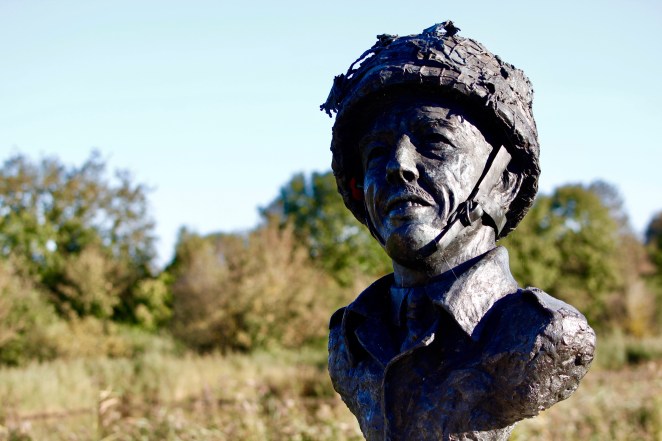
The bridge was rename Pegasus Bridge, as the flying horse was the insignia of the 6th Battalion. The cafe on the bank is considered the first French house liberated. The reason for why the capture of the bridge played such a crucial role, is that it limited German counter attack with the landing and advancing of the Allied forces from the beaches.

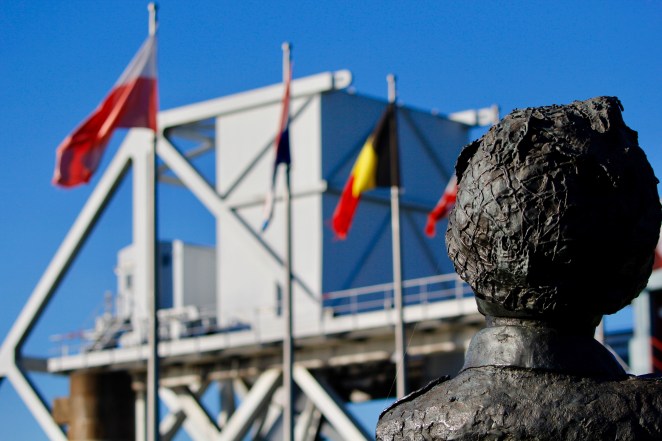

And with that, the sun was setting on us, so we headed back to Fécamp to indulge in beer, frites and crêpes and then bed.
By the end of the Battle of Normandy, over 5,000 Canadian heroes laid down their lives. Thank you for your service.

